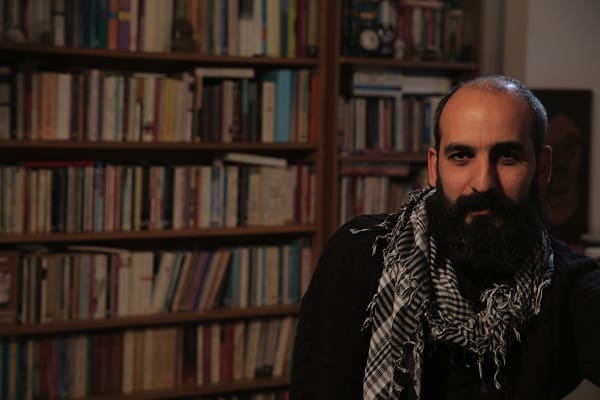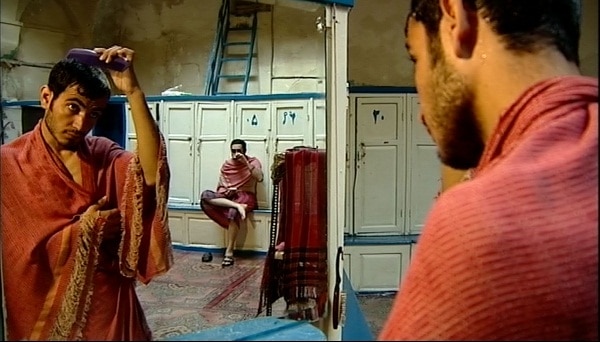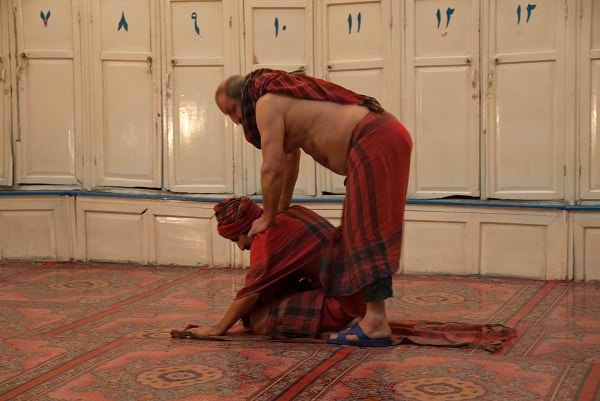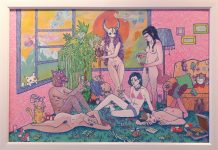Are all places in the world becoming the same? In fifty years, will people only go to shopping malls, not bazaars? Will there only be bars and no meyhanes? The film trilogy of Iranian director Mehdi Shabani explores the Near Eastern cultural traditions of hamams, backgammon and meyhanes, looking at their place in the lives of the people who live in this region and why he believes they are in decline.

You made the first film in your trilogy, The Bathhouse That Wanted to Keep on Being a Bathhouse in 2009-2010 in Tehran. What inspired you to make this film?
I decided to make a documentary about hamams because these kinds of places and their culture are going to disappear. When I say going to disappear, I should say they have already disappeared from our culture. In some countries like Iran and Turkey, we are between two different kinds of cultures: modernism and tradition. Tradition gives you some idea about how to live, how to act and how to have relationships with other people. On the other hand, people want to have a more individualistic culture, which comes from modernism.
In some countries, like Iran, people actually try to throw out all of the traditions and make something new. I think we should document these traditions so that we know what they were.
For hamams, the goal of my project was to look back at them without any nostalgia. This is very important for me because I don’t want to say that the old times were really good or that people were kinder back then. People usually don’t want to face the past and if they do, they try to say that it was really bad or really good. This isn’t always the case but that’s another issue. So, I didn’t want to look at hamams in a nostalgic way. I tried to say, “OK, life was a certain way and now we are in a different situation. Let’s try to look at that tradition from today’s point of view.”
Was it difficult not to be nostalgic?
When making a movie it’s difficult because the nostalgic way is completely clear; we have a picture that’s black or white, and that’s it. You just need to manipulate people’s emotions by showing them some symbols of old times. But without that approach, it’s very difficult for the film to make sense for them. You have to show them and make contrasts for them.

When you were making the hamam movie, how did you avoid making a nostalgic representation?
I tried to bring together all the points of view from people on the street. I went outside and just asked people some questions. I tried to include lower class people, upper class people, modern people, traditional people, women, men, young people and so on. I tried to get everything from them and afterwards put it together to show the contrasting views of the hamam. Actually, my idea was that the hamam is just a representation of this kind of society—a society caught between modernism and tradition. So, I tried to fit every aspect of this situation into the hamam concept.
You said that traditions in general teach people how to build relationships. How do you think a hamam does that?
Think about this: In the past, a hamam was a kind of social media for people in this region. People from one neighborhood went to the hamam together and talked about some issues from their week. It’s a very weird situation because it’s a bunch of completely naked people. But in this place, kids could be socialized with adults. At the same time, people shared things together in the hamam. They talked to each other. They shared news from the neighborhood.
In the Middle East or in traditional cultures, we have three places to share news and make decisions: the bazaar, the hamam and the kahvehane. There have been big, historical events that started from the bazaar, for instance. In Iran, the Iranian Constitutional Revolution or Mashrutiyat movement started completely from the bazaar. About 110 years ago, there was an economic agreement between Iran and Great Britain. The movement started in the bazaar and spread throughout the country. There was a revolution of sorts.
But when you get rid of the places where decisions are made, you don’t have anything to replace it. Nowadays we function as single cells and not as a collective society. People don’t use the hamam as they used to.
How did people in Iran respond to your film?
During the making of the movie, people asked, “Why a hamam? We have a lot of other important issues that you should work on. Not something like a hamam. Hamams have almost disappeared and we don’t need them. Why do you want to spend that much energy on a thing which is not important?” This was the typical reaction.
But after the first screening, I got really good responses from audiences. Some people said they found something to talk about with the older generation. I got a lot of comments after the showing on the BBC. People said after this documentary they sat with their grandfather or grandmother and talked about their memories of the hamam.

You’ve mentioned that the world of cinema favors portrayals of the Middle East as a place of conflict. Do you think the initial reaction of people in Iran is related to this?
We don’t have a big market of documentaries in this region. The market is western film festivals. Western festivals usually want to show the Middle East as “the other” and portray it as a place of war, gender conflict and so on. So, we get used to seeing ourselves from their point of view. Filmmakers usually tailor their projects to outside expectations because they know if they want to be successful—if they want to get awards from festivals—they should make movies about politics or human rights. This is because in the West they try to say that when we talk about the Middle East, we’re talking about an area without human rights. So, they think, “We should focus on this and help them get human rights.” Because of this, cultural things like hamams and backgammon are not well represented in the media.
And how would you like to see the Middle East portrayed in cinema?
Which Middle East you are we talking about? We don’t have a Middle East in my opinion. I use the word “Middle East”, as well, but it’s the “Middle” of where? “East” of where? It’s a European concept. When we say “Middle East” in the Middle East, we try to describe ourselves from someone else’s point of view.
As a person who lives in this region, I would like to find myself and my neighbors in this portrait. It’s like a big puzzle. You see some parts of this puzzle like conflict and human rights issues in documentaries, in movies and in history. These things are completely true but they don’t make up the whole picture. I would prefer to see other parts in order to have a bigger, more realistic picture of this area or this culture or whatever we want to call it.
You can read Part 2 of this interview here.
Dayla Rogers is a contributor to Yabangee










Very informative and interesting. I like the questions in both parts 1 and 2!! Great job!
[…] You can read Part 1 of this interview here. […]
[…] The film will be screened on Wednesday 17 June at 7:00 pm at SALT Beyoğlu. Check out part 1 and part 2 of Mehdi’s […]